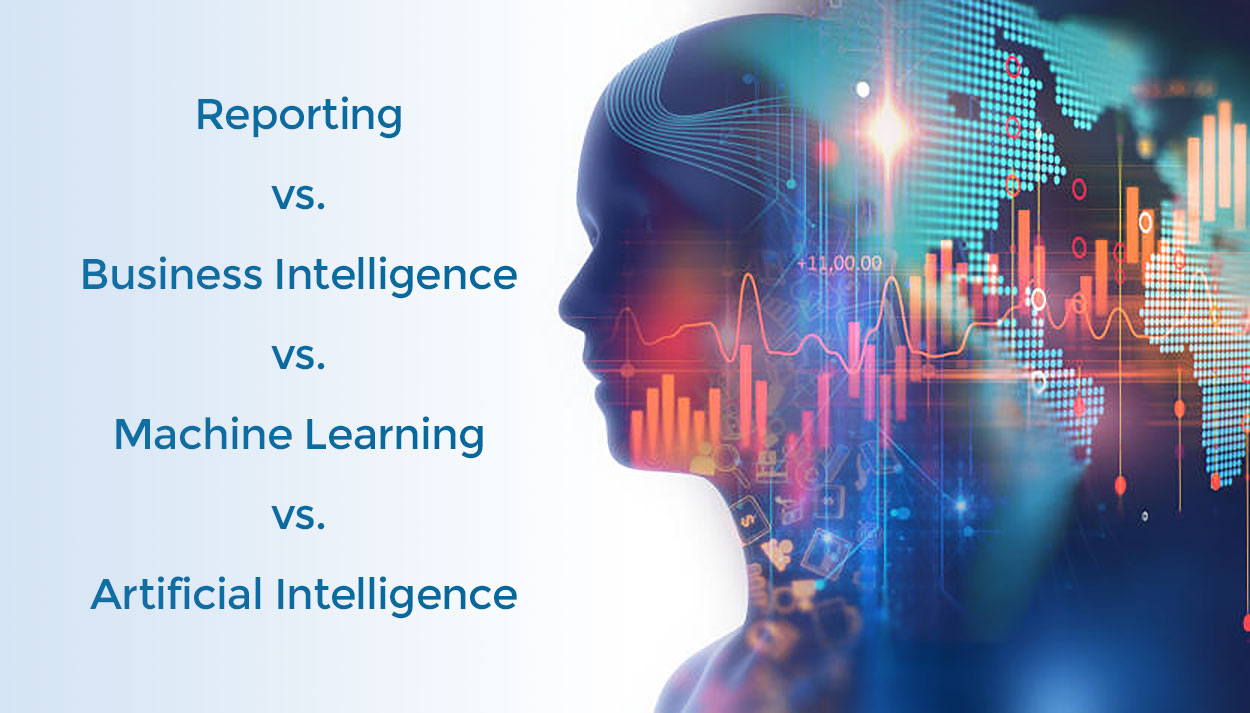- Author, Ron Ketterling
We wanted to cover a topic that is confusing but needs to be understood in order to keep up with software and technology trends. We hope to clear up some confusion and outline why it matters to our clients; or anyone using today’s technology. Understanding the differences between reporting and business intelligence, machine learning and artificial intelligence makes a difference in how we use and select software and what that software can do for us.
What do these terms actually mean?
In its most simplistic form, Artificial intelligence (AI) is the simulation of human intelligence processes by machines; especially computer systems. To understand deeper AI concepts, you need to first understand the differences between machine learning, deep learning, and neural networks. We will cover machine learning for the sake of this article.
You’ve interacted with some form of AI in your day-to-day activities. With Gmail, for example, you may like the automatic email filtering feature. On your smartphone, you probably fill out a calendar with the help of Siri, Cortana, or Bixby. Many newer vehicles come with a driver-assist feature.
AI built into business software
AI is built into many of the newer Enterprise Resource Planning solutions such as Microsoft Dynamics 365 Business Central which uses Cortana AI. As helpful as these software products are, they lack the ability to learn independently. They cannot think outside their code.
Machine learning is a branch of AI that aims to give machines the ability to learn a task without pre-existing code. It is the scientific study of algorithms and statistical models that computer systems use to perform a specific task without using explicit instructions, relying on patterns and inference instead.
Business intelligence (BI) refers to technologies, applications and practices for the collection, integration, analysis, and presentation of business information. The purpose of Business Intelligence is to support better business decision making. BI technologies provide historical, current and predictive views of business operations. Some examples of business intelligence technologies include data warehouses, dashboards, ad hoc reporting, data discovery tools and cloud data services.
Business reporting refers to the reporting of operating and financial data by a business enterprise; providing information to decision-makers within an organization, to support them in their work. Reports can be distributed in print form, via email or accessed via a corporate intranet. Business reporting can use BI data to inform strategy and may involve data visualization.
How does this all tie together?
Artificial intelligence, in the form of machine learning, cognitive computing, and natural language tools, will change the future of reporting. These technologies will improve the user experience by getting to know what users want. Others will take over some of the reporting grunt work. The writing of reports, at least the first drafts, will happen without people involved. In addition, intelligent reporting will be more prescriptive. The same tools that are reshaping the future of forecasting, predictive analytics and algorithms, will enhance the quality and value of reports.
Instead of having static data on paper, Finance customers will use mobile devices to navigate information at their own pace and how they want. Reporting tools themselves will become interactive, too. Real-time reporting arrives when all aspects of the reporting process are automated and streamlined. The big barriers to that happening today are data quality and latency (i.e., the lack of timeliness).
In the next installment of this series, we are going to look at how Microsoft Dynamics 365 Business Central is using AI to help businesses evolve using a combination of these tools and what that might look like for your business too.


